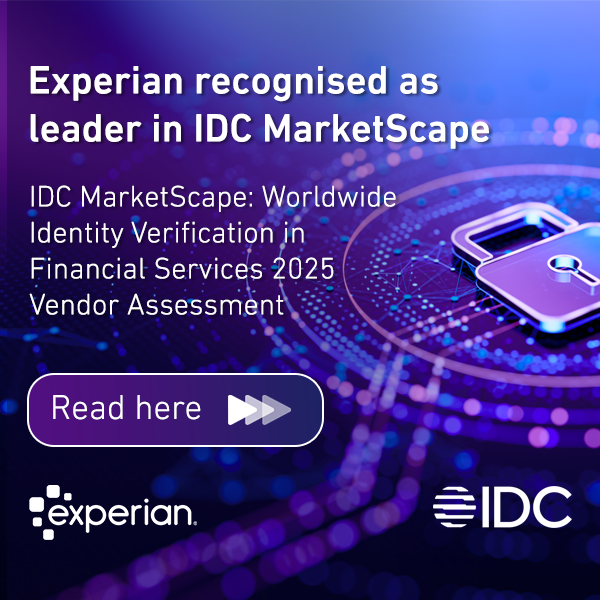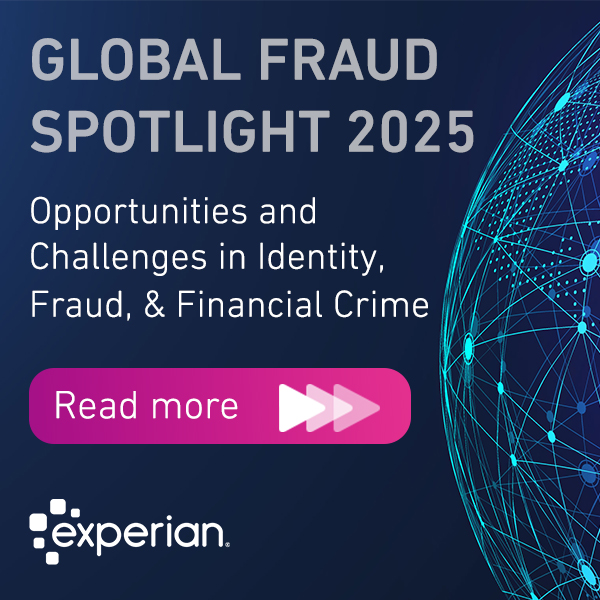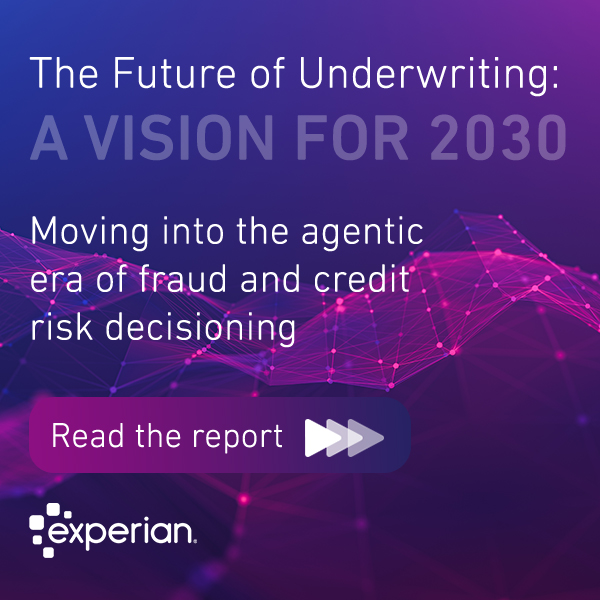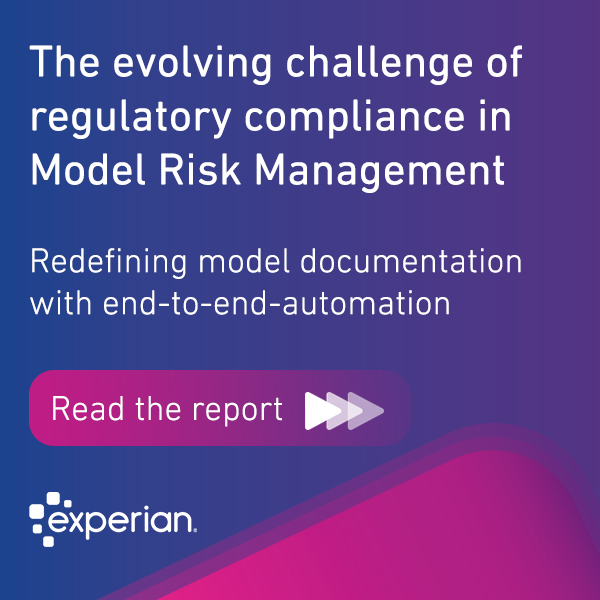Customer Experience
Engaging consumers in a more meaningful way is key to business success, we look at how to provide the right level of security, personalization and convenience in a complex digital landscape.

It's hard to imagine an individual customer volunteering to remember multiple online passwords for various online accounts. Yet, for most of internet history, passwords have served as the backbone of online security and recognition—and given fraudsters easier access to our personal and financial data. Fortunately, our recent report reveals that consumers and businesses are evolving how they think about online recognition and authentication. Passwords are no longer consumers' preferred method of online security. For the second year, they didn't even make the top three list of what consumers consider the safest recognition methods. Instead, consumers are increasingly open to a variety of recognition tools, from physical and behavioral biometrics to one-time passcodes. By providing recognition choices, companies can improve the customer experience, decrease fraud, and ultimately build even more brand trust. Consumers are moving beyond passwords, but what should come next? Around the world, consumer fraud concern is rising in tandem with fraud activity. More than half of consumers report that they're worried about fraudulent online transactions, and 40% say that their concern has grown over the past year. That's likely because online fraud has become a far too common experience. For instance, 58% of consumers say that they've been a victim of fraud or know someone who has been a victim, and 83% of consumers say online security is their top priority. The awareness has made consumers more interested—and more confident in—emerging online recognition tools. It seems that many are not only tired of passwords but also understand how easily passwords can be compromised. Those surveyed ranked physical biometrics, pin codes delivered to a mobile device, and behavioral biometrics as the safest recognition methods. Notably, consumer confidence in each of the top three methods has increased significantly since 2021. This confidence in advanced recognition tools spans generations. For instance, 90% of Baby Boomers rank physical biometrics as the most secure, and 82% of Gen Xers and 75% of Gen Z say the same. Meanwhile, 81% of Millennials say behavioral biometrics are the most secure. These survey results suggest that most consumers are aware of fraud risk and willing to explore technologies that make their online transactions safer. Why recognition choice leads to better business outcomes Amidst this environment of change, financial service companies have the opportunity to introduce advanced recognition methods. Consumers are showing their willingness to move beyond passwords. But which recognition method should financial service companies choose? Which one will win out over the others? There's no one right answer. Consumers rank physical biometrics, pin codes, and behavioral biometrics as their top three preferences; however, there is no runaway leader in the group. Which method consumers prefer depends on what they're prioritizing. For instance, consumers who want convenience prefer physical biometrics, while people who value security tend to like two-factor authentication. The ambiguity around preferences allows businesses to introduce choice to their customers. Companies can offer visible methods that give customers access to the newer recognition tools they're beginning to prefer. Meanwhile, continuing to layer invisible methods that strengthen the overall security profile and enhance the customer experience. A menu of recognition options speaks to customer sentiments toward emerging technologies and may engender more trust and loyalty to a brand. For example, our 2022 research shows that 59% of consumers say that use of artificial intelligence increases their trust in a company. The key is being transparent about the choiceson offer and the role they play in protecting customer accounts and data. For example, explaining that the data underpinning specific authentication methods never leaves the device can go a long way with customers who may have misguided assumptions or reservations about specific recognition tools. The orchestration imperative Implementing choice can help customers improve the perception—and reality—of their online security. But leveraging multiple recognition options can also help organizations to better fight fraud. Multiple options enhance understanding of the customer and enables data analysis that can more easily identify outliers. The numerous data points strengthen recognition efforts, which further reinforces trust. It's a virtuous cycle that improves the customer experience and benefits the business. However, implementing multiple recognition methods can be a costly endeavor. Whether using outside vendors or developing and maintaining tools in-house, businesses should be layering recognition tools in the most efficient (and affordable) way. This is where orchestration tools really help. Creating secure environments for customers and businesses will continue to be complicated. Fraudsters are only getting more creative, and mitigating their impact requires a complex web of solutions that stymies them at various points. By starting with an orchestration engine, businesses can launch and manage multiple recognition methods more elegantly, using each tool correctly and at the right point in the customer journey. This strategic approach creates a single point of access to fraud and identity solutions, giving a 360-degree view of customer identity and reducing friction across the customer lifecycle. The days of passwords as the primary recognition tool are waning. Today's consumers understand the benefit of advanced recognition methods and will use them to increase their security, convenience and privacy. Offer customers choices, and businesses can meet these evolving expectations and decrease fraud risk along the way. Stay in the know with our latest research and insights:

Insights from the 2022 Global Identity & Fraud report Building digital consumer trust amidst rising fraud activity and concerns The survey underpinning the insights in our 2022 Global Identity & Fraud report encompasses 1,849 business respondents and 6,062 consumers from 20 countries, including Australia, Brazil, China, Chile, Colombia, Denmark, Germany, India, Indonesia, Ireland, Italy, Malaysia, The Netherlands, Norway, Peru, Singapore, South Africa, Spain, UK, and US. We’ve also included interviews with consumers from Brazil, Germany, the UK, and US. Insights from the video: The emergence of a digitally savvy consumer with a heightened awareness of fraud, and trusts brands to protect them online Consumers expect to increase their online activity in the next 3 months Consumers have higher expectations of the online experience Businesses are investing in multiple digital initiatives to meet consumer expectations, but the fraud risk persists More than half of consumers surveyed globally have been a victim of fraud or know someone who has 70% of businesses say their concern about fraud has increased since last year Only 30% of consumers are confident that businesses will recognise them repeatedly online, even though 84% of businesses say recognising customers is very or extremely important Consumers rank security as the top factor in their online experience and are actively seeking out businesses to provide it Read the report to discover 5 tips on how to increase the value of your customer's experience and reduce fraud risk Stay in the know with our latest research and insights:

Online fraud has increased at unprecedented levels over the past two and half years, with numerous reports coming from all corners of the world to confirm that. From benefits and unemployment fraud to authorised push payment fraud, and more advanced scams such as synthetic identity fraud and deepfake fraud, cybercrime has been on the rise. Understandably, the increase in criminal activity has had a significant impact on financial services businesses, and it is little wonder that this has been reflected in our recent study: • 48% of businesses reported that fraud is a high concern, and 90% reported fraud as a mid-to-high concern • 70% of businesses said their concern about fraud has increased since last year • 80% of businesses said that fraud is often or always discussed within their organisations High levels of fraud have also raised consumer concern, and their expectations of the protection businesses should offer them. Nearly three-quarters of consumers said that they expect businesses to take the necessary security steps to protect them online. However, only 23% of respondents were very confident that companies were taking steps to secure them online. Businesses need to take additional steps to meet consumer demand, while also protecting their reputation and revenue streams. Businesses are investing in fraud prevention, so why isn’t it working? As a result of the rise in fraud during the pandemic, there has been an increase in spending related to fraud prevention tools and technology, with 89% of businesses surveyed in our latest research indicating that investment in fraud detection software is important to them. However, there is a risk that institutions could take a siloed approach, and funds could be spent on point solutions that solve one or two problems without adding the needed flexibility to fight multiple attack patterns. This gives fraudsters the opportunity to exploit these gaps. Orchestration and automation drive fraudsters away Criminals constantly evolve. They are not new to technology and have multiple attack patterns that they can rely on. They also share information between themselves at a higher rate and pace when compared with financial institutions, banks, and merchants. Fraudsters can learn how to bypass one or two features in an organisation’s fraud prevention strategy if they recognise weak spots or a vulnerability that they can take advantage of. However, when multiple fraud prevention tools and capabilities work harmoniously against them, the chances are higher that they will eventually be blocked or forced to move to a weaker place where they can exploit another system. Synchronizing multiple solutions together is the key to excellent fraud orchestration Fraud orchestration platforms give businesses the chance to layer multiple solutions together. However, taking a layered approach is not only about piling multiple point solutions but also about synchronizing them to achieve the best output possible. Every solution looks at different signals and has its own way of scoring the events, which is why they need to be governed into a workflow to achieve the desired results. This means that institutions can control and optimize the order in which various solutions or capabilities are called, as the output of one solution could result in a different check for a subsequent one or even the need to trigger another solution altogether. It also gives companies the ability to preserve their user journeys while answering different risks presented to them. Some businesses are seeking to build trust with customers but want to stay invisible to remove friction from their digital customer experience. This is where capabilities such as device intelligence, behavioural biometrics, or fraud data sharing could be added as an additional layer in the fraud prevention strategy. Those additional solutions may only be called 30 per cent of the time when there is a real need for an additional check. Excellent orchestration means that organisations can rely on multiple solutions while only calling the services they need, exactly when they need them. Building trust through a secure but convenient customer experience. Machine Learning should be the final layer to rule them all The results from our research revealed the top initiatives that businesses are leveraging to improve the digital customer journey with the top two being: • Improving customer decisioning with AI • New AI models to improve decisioning While our April 2022 Global Insight Report showed that consumers are becoming more comfortable with AI, with 59% saying they trust organisations that use AI. Fraud orchestration platforms allow companies to deploy unified decisioning by leveraging machine learning (ML) on top of multiple fraud prevention tools. This means they can rely on one cohesive output instead of looking at separate, sometimes contradictory results across various platforms and making subjective decisions. ML can also offer explainability by pointing out the attributes that contributed the most to a particular suggestion or decision. These could be attributes coming from a few different tools instead of one. This also means that operational teams, like fraud investigators, have a single view of activity, resulting in operational efficiency - removing the need to log in to different tools and look at multiple screens, views, and scores, while also enabling faster decisions. Stay in the know with our latest research and insights:

The survey underpinning these insights encompasses 1,849 business respondents and 6,062 consumers from 20 countries, including Australia, Brazil, China, Chile, Colombia, Denmark, Germany, India, Indonesia, Ireland, Italy, Malaysia, The Netherlands, Norway, Peru, Singapore, South Africa, Spain, UK, and US. We’ve also included interviews with consumers from Brazil, Germany, the UK, and US.

Building digital consumer trust amidst rising fraud activity and concerns Our latest report dives into the growing expectation that businesses recognise and protect consumers online, and the challenges businesses must overcome to succeed in building digital consumer trust. In recent years, our annual report has called on businesses to meet consumer expectations for online recognition and security while also improving their digital customer experience. Our latest research reveals that companies have received the message and are investing in multiple digital initiatives. But the fraud risk persists. 70% of businesses say that their concern about fraud has increased since last year. So where is the disconnect? A look inside this year's report: Digital financial transactions have become the norm in recent years leading to the emergence of a movement of savvy consumers with a heightened awareness of fraud and the role recognition and security tools play in protecting them online. We found that more than half of consumers surveyed globally have been a victim of fraud or know someone who has. Despite these concerns, most consumers say their online activity will increase in the next 3 months. What are consumers looking for from businesses? Consumers globally value security in their online experience above other factors. The research reveals how consumers are actively seeking out businesses that they perceive to be secure, and what this looks like to them. Read the report to find out: • How online security yields engagement and trust with today’s digital consumers • The role of businesses in protecting online consumers and the benefits of doing so • The current opportunity for businesses to implement multiple identity and fraud solutions • The role that orchestration and outsourcing play in helping companies prevent fraud We discovered there is still a significant gap between consumer sentiment and business intentions related to identity recognition. Only 30% of consumers are confident that businesses will recognize them repeatedly online, even though 84% of businesses say recognising customers is very or extremely important. What leads to success? Financial service organisations need to find ways to create more online security while improving the digital customer journey. Experian’s identity and fraud experts also offer 5 tips for strengthening digital capabilities to benefit the customer experience and reduce fraud risk. The survey underpinning these insights encompasses 1,849 business respondents and 6,062 consumers from 20 countries, including Australia, Brazil, China, Chile, Colombia, Denmark, Germany, India, Indonesia, Ireland, Italy, Malaysia, The Netherlands, Norway, Peru, Singapore, South Africa, Spain, UK, and US. We’ve also included interviews with consumers from Brazil, Germany, the UK, and US.

We surveyed 6,000 consumers and 2,000 businesses from 20 countries worldwide as part of our ongoing efforts to learn more about how, why, and where consumers interact with businesses online.

We surveyed 6,000 consumers and 2,000 businesses from 20 countries worldwide as part of our ongoing efforts to learn more about how, why, and where consumers interact with businesses online. The new norm in payments As consumers accelerated their move online to access products and services to manage their financial lives digitally, their expectations for security, privacy, and convenience have all increased. Mobile wallets now rival traditional credit card payments In the last six months: 62% say they’ve used mobile wallets 63% say they’ve used traditional credit cards A need for speed Consumers place a high value on fast transactions. When it comes to payment methods, they value: Speed Security BNPL is here to stay 18% have used BNPL in the past six months 57% say BNPL could replace their credit card 71% perceive BNPL as secure The reasons for BNPL Avoid credit card debt: 80% of US consumers 70% of UK consumers Preferred payment method: 80% of Indonesian consumers 60% of Norwegian consumers For purchases outside of budget: 60% of German consumers Where is BNPL most in use? Norway Netherlands Germany China Indonesia Australia The rise and reach of new payment methods provides businesses with an opportunity to prioritise financial inclusion. These new payment methods give consumers who’ve lacked access to traditional banking, lending, and credit cards additional financial options. Read the full report to discover: The new digital consumer Increased online activity, increased concern The trust-security connection A relationship of equals Digital consumers, digital opportunity The five things businesses should do

Experian’s latest research shows that the crisis of the past few years has yielded a new, savvier digital consumer. With the rapid move to online services amidst the pandemic, consumers worldwide adapted—and quickly. Fifty-three per cent of consumers say they have increased their online spending and transactions within the past three months, and 50% plan to increase it even more over the next few months. As online activity has surged, so too have consumer expectations for friction-free, secure transactions. More than 80% of consumers say a positive online experience makes them think more highly of the brand. And if businesses don't meet those expectations? Well, switching providers is only becoming easier . For financial service providers, the evolution of consumer behaviour presents both an opportunity and a challenge. It's never been more critical to ensure that digital experiences are convenient and frictionless. However, soon that will be the expectation and not the draw for new customers. Instead, finding unique ways to compete will be what separates the good from the great. Convenience versus risk In our latest survey, consumers ranked security, convenience, and ease of recognition as the top contributors to a positive online experience. All of these are vital components to providing a frictionless transaction. However, seamlessly logging in to a financial app, applying for credit, or managing a balance isn't yet the standard for every provider. Many traditional banks continue to play catch-up with digital upstarts, but consumers are becoming less tolerant of barriers to accessing services and products, with 23% saying that businesses aren’t meeting their expectations for digital experiences. This provides businesses with the opportunity to attract and retain new customers, especially those tired of manual account onboarding processes. For instance, leveraging emerging recognition tools adds to the convenience factor, limiting the time customers spend inputting data and streamlining the entire experience. But even as they continue to prioritise frictionless processes, businesses should be wary of sacrificing security or increasing their own risk. In our survey, 73% of consumers said that the onus is on businesses to protect them online. While they don't want security efforts that slow down their transactions, they expect the level of security to remain high nonetheless. On the business side, we've also seen providers creating friction-free options for lending—for example, in the Buy Now, Pay Later (BNPL) space—that enable consumers to access credit nearly immediately. But even with the convenience, there is still a need to manage affordability and ensure that these customers aren't introducing additional risk to credit models. Differentiate to retain customers: The growing role of rewards With all the innovation underway, a friction-free experience will become the standard. And it may already be so among digital-first businesses. This begs the question: If a secure, convenient experience is the norm for consumers, then how can businesses differentiate themselves? The next competitive differentiator will be how businesses reward customers for their loyalty. It's no longer enough to provide new customers with low-interest or no-interest credit on small purchases. Forward-looking financial services providers are getting far more creative with their rewards. For instance, businesses offering BNPL are enabling their customers to accumulate loyalty points for using the service with multiple retailers. Customers can then put those points to use as discounts on merchandise from the places they already love to shop. Data sharing and analytics play a significant role in this approach, allowing businesses to understand their customers' behaviours and personalise offers and rewards. Notably, our survey reveals that 83% of consumers say their awareness of how companies use their personal data for security, convenience, and personalisation has increased. Today's consumers are as digital as ever, and there's no going back. While friction-free may have been the differentiator before, it's rapidly becoming the standard. Going forward, financial services providers will need to find a new way to compete for savvy consumers who expect—and demand—secure, frictionless online experiences. Stay in the know with our latest research and insights:

We surveyed 6,000 consumers and 2,000 businesses from 20 countries worldwide as part of our ongoing efforts to learn more about how, why, and where consumers interact with businesses online.

The evolving expectations and experience of the new digital consumer The expectations of consumers are changing rapidly. People of all ages and incomes are online, seeking the right products and services to manage their financial lives digitally in a secure, speedy, and frictionless environment. A look inside: Our latest research reveals the rise of a new digitally savvy consumer—one who is increasingly aware of new payment methods, advanced recognition tools, and the use of AI, and has higher expectations of their digital experience. Read the report to find out what businesses can do to harness the digital opportunity: 1. Leveraging the AI advantage 2. Incorporating embedded finance 3. Introducing new, more secure technologies 4. Educating consumers about how you use their data 5. Exploring solutions that aggregate emerging technologies Online spending is continuing its upward trend, with 53% of consumers surveyed saying they have increased online spending and transactions in the past three months, and 50% predicting that their spending will increase in the next three months. Enabling this shift is the extent to which businesses can provide a quality digital experience. 81% of consumers said that a positive online experience, which includes interactions with multiple digital touchpoints makes them think more highly of a brand. Consumers simply do not tolerate poor-quality online experiences and will take their loyalty to businesses that can meet their expectations. Speed and security are a driving force for consumers in the payments space, which is reflected in rapid rise in mobile wallet payments. Rivalling traditional payment methods, 62% of consumers say they’ve used a mobile wallet in the last six months. Consumers are embracing these new habits across the board, with 18% saying they have used BNPL in the past six months, and 71% seeing it as secure. With the rise and increasing awareness of new payment methods like BNPL, consumers who have lacked access to traditional banking, lending and credit cards now have additional financial options, giving businesses the opportunity to prioritise financial inclusion. The rise of new and increased online activity has resulted in increased concerns about online security, with 42% of consumers more concerned than they were 12 months ago. With this awareness comes opportunity for businesses to leverage new recognition approaches. Biometrics seems to resonate with consumers, with 81% reporting that they feel most secure when encountering physical biometrics. Trust and security are becoming interdependent, with consumers expecting strong security measures from businesses. 73% of consumers say that the onus is on businesses to protect them online, and 45% identify the belief that businesses have strong security measures in place as the top reason to trust an online transaction. As consumers become ever-more educated and aware of the digital world, they want businesses to communicate with them about why they are using personal data. 63% of consumers are willing to share their data and see it as beneficial to them if they see security and convenience in return. We surveyed 6,000 consumers and 2,000 businesses from 20 countries worldwide as part of our ongoing efforts to learn more about how, why, and where consumers interact with businesses online. Read the full report Stay in the know with our latest research and insights:

Juniper Research’s latest digital identity leader board predicts a big shift in the market – identity and fraud are now becoming synonymous. Experian’s position as number one vendor on Juniper Research’s leader board demonstrates why Experian’s flagship digital identity and fraud platform, Crosscore, is central to the future of identity and fraud management. “We’re thrilled Juniper has positioned us as the top provider of digital identity,” said David Britton, Vice President of Global Strategy for Digital Identity & Fraud at Experian. “Being able to accurately identify a customer in a digital transaction helps our clients provide a better customer experience and prevent fraud. Fighting fraud and reducing risk, while enabling great consumer experience is at the heart of Experian’s mission to make the digital world a safer place, even as cybersecurity rises as a worldwide threat.” Digital identity’s convergence of identity verification and fraud detection presents both opportunities and challenges for businesses, all in direct response to new consumer demands for a seamless, safe and uninterrupted digital customer journey. Key digital identity market Takeaways – Juniper Research Identity and Fraud Are Becoming Synonymous Trust is not a transactional feature of a digital identity system between identity creators and identity subjects, but rather, it is an inbuilt part. Given the unprecedented impact of the COVID-19 pandemic on eCommerce volumes, the advent of remote/hybrid working and the demand for eGovernment services, digital identity’s tie with privacy and security has become much more visible. An ever-increasing number of fraudulent activities highlights the need to ensure customer security and protection of personal and businesses data for integrity of digital identity systems. Fraud and digital identities are closely intertwined, also because preventing fraud involves getting the right identity datapoints, understanding their significance and acting upon the related findings. Governments Will Ramp Up Their Digital Identity Efforts Government regulations and initiatives around digital identity are a vital force shaping the market landscape. Success of eGovernment services is largely dependent on a mechanism of identifying citizens/users in an assured manner, usually via striving to create trusted identities. Even prior to COVID-19, governments around the globe were employing digital identity-related initiatives in areas other than eGovernment services, such as border controls and telehealth. Compelled by the challenges faced in terms of cybersecurity and citizen trust in identity initiatives, governments will increasingly collaborate with third-party vendors to come up with solutions with better usability and security. Identity Verification Use Cases and Underlying Technologies Will Continue to Dominate the Market Verification is one of the key areas affecting the digital identity market, mostly owing to the catalyst power of the pandemic digitalising transactions across all industries and business verticals. The solutions and use cases of digital identity verification (ie, login, anti-fraud, and decentralised identity) are numerous, as secure and convenient customer onboarding has been at the forefront of any critical digital engagement. These use cases and underlying technologies, such as biometrics, lend themselves to different industries and verticals and so, they will continue to enjoy customer uptake for the foreseeable future. Read now: Juniper Research Digital Identity Competitor Leaderboard Related content: Defining digital identity on the back of the ‘big digital shift’ What is digital identity and why should we care? Stay in the know with our latest research and insights:

Global fraud predictions for 2022, plus a closer look at regional fraud trends. Stay in the know with our latest research and insights:




